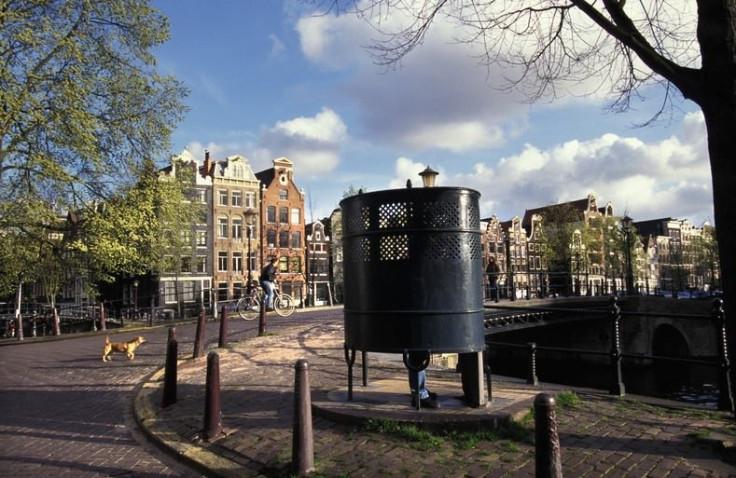Amsterdam pins hopes on sustainable urinals in an effort to solve "wild peeing" habits
The urinals are hemp-filled, odourless and do not need to be connected to sewage or water to be maintained
Amsterdam has come up with a green solution to help solve the city's long standing problem of public urination. The local council worked with Dutch-owned company Urban Senses in 2018 to test the use of sustainable urinals aptly called GreePee. As bars are starting to re-open after the lock down, the city is now set to push forth on installing the urinals.
The urinals look like your typical big planters with greenery covering the top but upon closer look, a visible opening on the side indicates your target pee zone.
Originally invented and designed by Richard De Vries, the urinals were first installed as a pilot project in 2018 in four of the city's "favourite" public urination spots located in the centre of the city. Being an environmental psychologist by trade, De Vries proposed this solution to the city's unstoppable "wild peeing" habit.
Ze staan er! Op 12 plekken in Amsterdam centrum vind je de GreenPee. Een circulaire combi tussen een plantenbak en een urinoir #greenpee #circulair #urinoir pic.twitter.com/NCWcnFGl90
— Urban Senses (@UrbanSenses1) August 17, 2020
The planters are hemp-filled and are not connected to water or sewage. It collects the urine through the odour-absorbing hemp fibre. This process simultaneously produces phosphate-rich organic fertiliser after a period of composting. A built-in hydro system collects rainwater and ensures the planters are kept nourished even during the dry months.The recycled urine will then be used to feed and provide irrigation to the city's green spaces.
Each planter can hold up to about 200-300 peeing sessions and can be provided with smart sensors that will send alerts to operators to check the urinals when it needs to be emptied.
According to CNN, the planters offer environmental as well as infrastructure benefits. Having the urinals installed will keep men from peeing on the walls of historical infrastructure and help protect these buildings from the corrosive and acidic effects of urine. It is also a better alternative to traditional toilets as it uses less water to maintain. Aside from its basic purpose and function, the hemp-filled planters were also designed to attract pollinators such as bees and butterflies.
After being encouraged by the results of the pilot project, the city had 12 GreenPee urinals installed all over the city's peeing hotspots. "The result was there was a 50% reduction in wild peeing. It was a great success," De Vries said.
As of this time, GreenPee hemp urinals can be seen in the Dutch cities of Vlaardingen and Beekbergen, as well as in the Belgian cities of Mechelen and Genk. The company is now looking into further research of generating electricity from pee deposited into a GreenPee urinal.

© Copyright IBTimes 2025. All rights reserved.





















